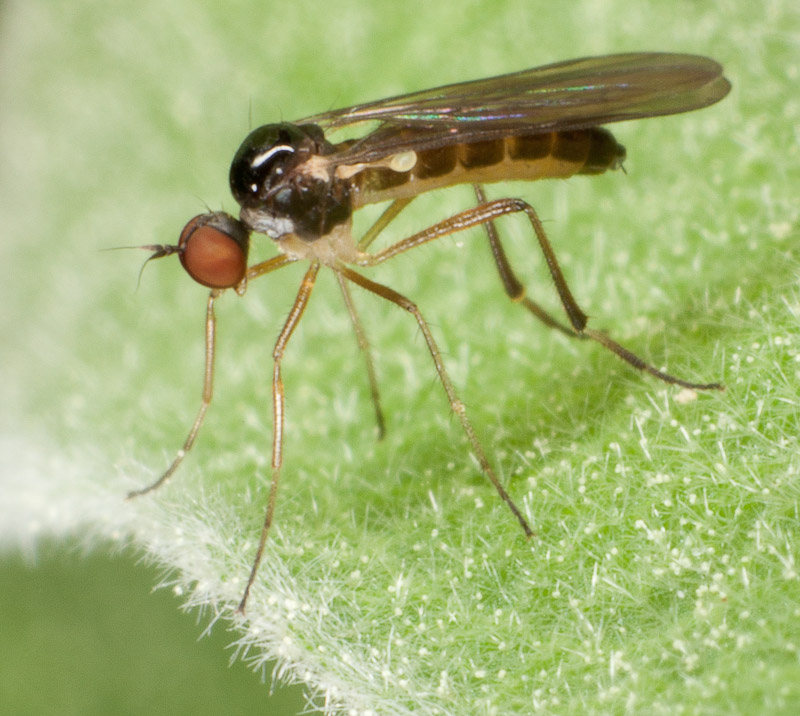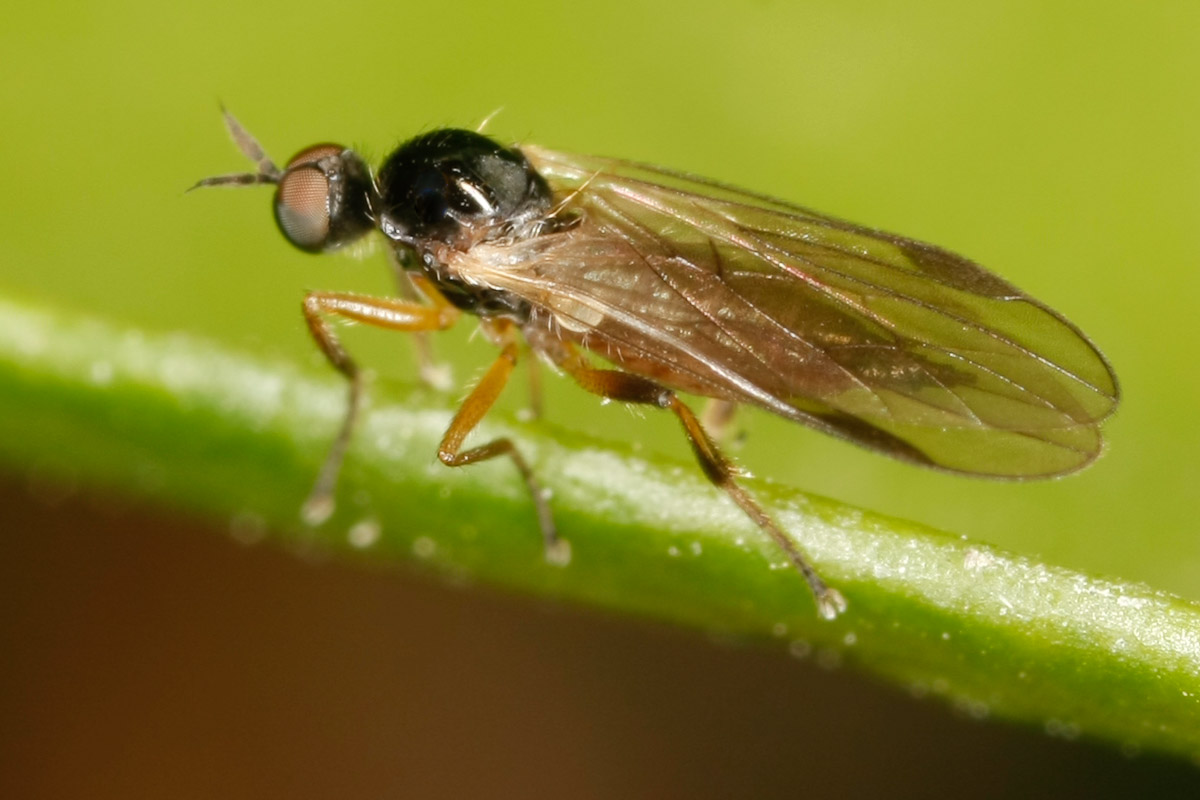Hybotidae
Ocydromia glabricula
The hump dance flies ( Hybotidae ) are a family of two-winged flies (Diptera ) and the flies ( Brachycera ) allocated. The representatives of this family were formerly attributed to the dance flies ( Empipidae ), but today they make based on morphological differences own family dar. Worldwide there are about 1300 species of this group are known in Germany about 200
The small flies are black in color and reach body lengths from 0.7 to 5.5 millimeters. The thorax is strongly arched ( hence the name ), and in most species a pair of legs is transformed into strong prey legs. Here, the lower leg of the thigh (femur ) is considerably thickened and spined, (tibia ) is curved accordingly. This transformation can be both the front legs ( Tachydromia, Tachypeza ) and the means ( Platypalpus ) and the rear legs ( Hybos ) concern.
The Hump Dance flies are hunters and come in limited habitats often found in large numbers of species. Thus one finds in such places up to 80 species in forests about 30 and 37 species in orchards. As an explanation for this coexistence unrivaled niche occupation and the non-specific prey choice is taken. The flies keep very common in the shrub layer or in damp leaves to hunt their prey and often ongoing, some species are also pollinators.
Mating occurs mostly on the ground, with some species also parthenogenesis has been observed.
The type Ocydromia glabricula the larvae are born alive. The females lay larvae in flight over dung in which they develop. Most other species lay eggs. The larvae live to 30 inches deep in the soil and overwinter there or in leaf litter, under bark and manure.









